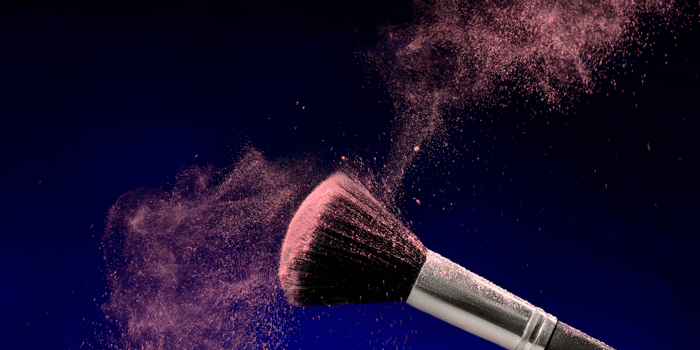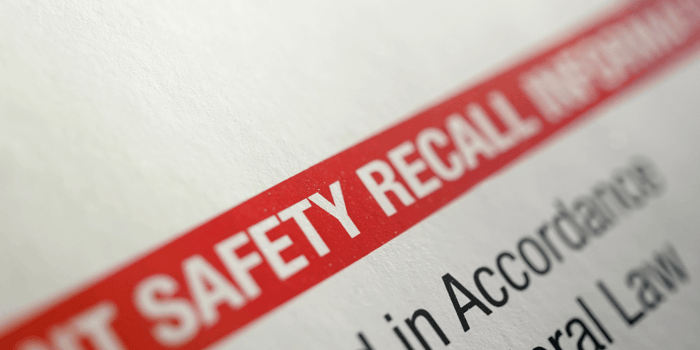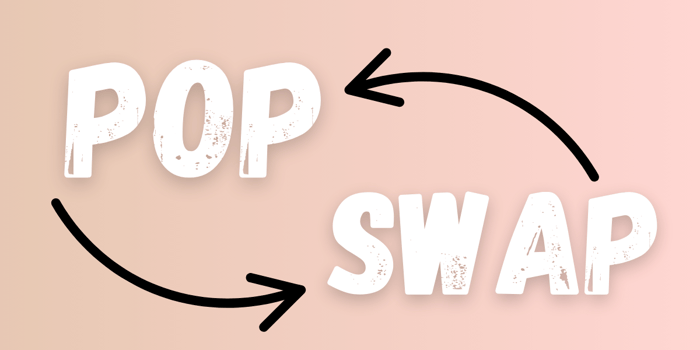Table of Contents
- Introduction: A Case Study on the Hidden Dangers in Children’s Cosmetics
- Far From Paraben Free Cosmetics: The Escalating Threat to Children’s Health
- What the Evidence Shows—and Why Parents Must Demand Safer Standards
- Findings & Action Steps: How to Fix the System and Protect Kids
- Conclusion: From Awareness to Action
- FAQs
Introduction: A Case Study on the Hidden Dangers in Children’s Cosmetics
Most parents trust that the personal care products sold for children—especially those found at familiar retailers or labeled “kid-safe”—are harmless. But over the past decade, a disturbing pattern has emerged. Children’s cosmetics, including play makeup, bath products, and glitter gels, have repeatedly been found to contain ingredients linked to cancer, hormone disruption, and developmental harm—prompting growing demand for paraben free cosmetics as a safer alternative.
Unlike adult cosmetics, children’s products are often marketed as toys or novelties, allowing manufacturers to bypass crucial safety testing and labeling requirements. This regulatory gap, combined with weak enforcement and vague ingredient disclosures, has left young consumers uniquely vulnerable.
This case study explores the escalating threat posed by toxic ingredients in children’s cosmetics. Drawing from industry reports, advocacy group findings, and regulatory actions, it examines the broader system failures that allow these ingredients into everyday products used by kids.
We’ll break down the issue into four critical parts:
Toxic Ingredients Hiding in Plain Sight – what’s really inside many popular kids’ cosmetics
The Regulatory Gap – why these products aren’t tested or labeled the way you’d expect
The Import Loophole – how unsafe products get into the country with little oversight
What Parents Can Do – how to make safer choices, advocate for reform, and protect your child’s health
At the heart of this case is a clear solution: paraben free cosmetics and clean, transparent formulations that avoid hormone-disrupting chemicals and undisclosed additives. When it comes to children’s developing bodies, “safe enough” isn’t safe enough.
Far From Paraben Free Cosmetics: The Escalating Threat to Children’s Health
Part 1: Toxic Ingredients Hiding in Plain Sight
Most parents assume that if a product is sold in a national retailer, labeled for kids, and covered in sparkles and smiley faces—it must be safe. But that assumption couldn’t be further from the truth.
Many children's cosmetics, including play makeup, bath bombs, peel-off nail polish, lip gloss, and glitter gels, contain ingredients that have never been tested for safety in children, and in some cases, are known to cause real harm. This part of the case study highlights the routine inclusion of harmful chemicals in everyday products—and why paraben free cosmetics are increasingly viewed as a safer, science-backed alternative.
Here’s what’s hiding behind the bright packaging:
Talc
Used as a base in powders and eye shadows, talc is often contaminated with asbestos, a known carcinogen. The 2019 FDA tests that confirmed asbestos in Claire’s children’s makeup were not an anomaly—they were a warning. Talc is still used in U.S. kids’ products today.
Petroleum-based dyes
Synthetic colors like Red 40, Yellow 5, and Blue 1 are derived from petroleum and linked to hyperactivity, behavioral issues, and even cancer risk. These dyes are banned or heavily restricted in Europe, but still completely legal in American cosmetics—including those made for toddlers and tweens.
Parabens & Phthalates
These are endocrine disruptors—chemicals that interfere with hormone function and have been linked to early puberty, reproductive harm, and long-term health effects. They're often found in glitter gels, lip glosses, toy perfumes, and shimmer sprays for kids. The inclusion of these compounds illustrates why there is growing demand for paraben free cosmetics and phthalate free makeup designed specifically for children.
Fragrance
One of the biggest loopholes in U.S. cosmetic labeling, “fragrance” is a protected trade secret and can hide hundreds of undisclosed chemicals. Many are associated with allergies, respiratory irritation, and hormone disruption—but you won’t find any of that on the label.
A 2016 analysis by the Environmental Working Group (EWG) found that nearly half of all personal care products marketed to children contain ingredients linked to serious health concerns. That includes known allergens, irritants, hormone disruptors, and potential carcinogens—all packaged and sold as safe for kids.
And these aren’t rare ingredients—they’re standard fare in many drugstore and dollar store cosmetic items.
The worst part? These ingredients are completely legal in the United States.
This section of the case study sets the foundation for a deeper exploration of how regulatory gaps and industry loopholes have normalized toxic exposure in kids’ cosmetics—and why a shift toward transparent, paraben free cosmetics is not just preferable but essential.
Part 2: The Regulatory Gap – Cosmetics vs. Children’s Health
If the ingredients in children’s cosmetics are so risky, why are they allowed at all?
The answer is simple—and disturbing: cosmetics in the United States are barely regulated. Unlike food or drugs, the cosmetic industry operates under outdated laws that haven’t kept pace with what science now knows about chemical exposure, hormone disruption, and early development.
This part of the case study explores how this regulatory gap enables toxic ingredients to remain in circulation—making the need for paraben free cosmetics and ingredient transparency more urgent than ever.
Here are the facts:
The FDA does not require cosmetic products (even those made for children) to be tested for safety before they go to market.
Manufacturers are not required to register their facilities, submit safety data, or list every ingredient.
Only 11 ingredients are banned or restricted in U.S. cosmetics.
In contrast, the European Union bans or restricts more than 1,600 cosmetic ingredients—many of which are still allowed in products sold to American kids.
There are no federal laws that specifically protect children from toxic ingredients in cosmetics, despite their increased vulnerability.
And when problems are discovered? There’s no authority to force a recall.
The FDA cannot mandate that a dangerous product be removed from shelves.
Even when asbestos was confirmed in Claire’s and Justice makeup kits, the recalls were voluntary, and companies were allowed to dispute test results or quietly remove products without penalty.
This regulatory gap creates a dangerous illusion:
Parents assume that if a product is on store shelves—at Walmart, Dollar Tree, or Claire’s—it must have passed some kind of safety standard. But that’s not the case.
In reality, the system is built to protect industry—not children.
It prioritizes corporate self-regulation over public health and leaves parents with little to no information about what’s actually in the products their kids are using.
And that’s exactly how dangerous ingredients continue to end up in play makeup, sparkly lip gloss, bath bombs, and nail polish for children—even as safer alternatives like paraben free cosmetics exist but remain unregulated and hard to identify without transparency.
Part 3: The Import Loophole – Cosmetics Labeled as Toys
If the lack of safety testing and loose regulations weren’t alarming enough, there’s another loophole that makes children even more vulnerable: many dangerous products aren’t regulated as cosmetics at all.
They’re labeled—and sold—as toys.
This section of the case study examines how import labeling practices allow harmful products to completely bypass U.S. cosmetic safety laws—further proving why transparency and paraben free cosmetics are essential for protecting kids.
Here’s how the loophole works:
Imported makeup sets—especially those sold in bright, toy-like packaging with names like “Princess Glam Set” or “Sparkle Girlz Makeup Kit”—are often classified by manufacturers as toys, not cosmetics. That means they fall under the jurisdiction of the Consumer Product Safety Commission (CPSC)—not the FDA.
The CPSC doesn’t regulate cosmetic ingredients.
So if the product is technically a “toy,” no one is checking what’s inside.
This is how real lip gloss, eye shadow, and glitter gel ends up in kids’ hands with no ingredient review, no safety testing, and no label disclosure. It’s how contaminated, dangerous makeup gets shipped in from overseas and ends up on store shelves or in online carts.
And it’s not just a hypothetical problem.
In 2023, the FDA issued Import Alert 53-17, targeting dozens of these foreign-made “toy” makeup kits after finding bacterial contamination and undeclared allergens. Products that looked like playsets were actually loaded with dangerous microbes and hidden chemicals. But because they were classified as toys, they evaded cosmetic regulation altogether.
Many of these kits were sold through major online retailers like Amazon, Shein, Temu, and Walmart.com, and at discount stores such as Dollar Tree and Five Below. Parents saw glittery packaging and low prices—and assumed it was harmless fun.
But the reality is that no one had checked to make sure those products were safe to put on a child’s face.
This loophole creates a shadow market of children’s cosmetics that completely bypass regulation, leaving millions of families exposed to unknown risks. Even the FDA admitted in its 2023 alert that many of these imports still slip through undetected.
And because they’re labeled as toys, parents may never even think to ask what’s in them—let alone consider safer alternatives like paraben free cosmetics made with full ingredient transparency.
What the Evidence Shows—and Why Parents Must Demand Safer Standards
Across Parts 1 through 3 of this case study, a disturbing pattern emerged.
We began with the ingredients—talc, petroleum dyes, parabens, phthalates, and undisclosed fragrances—routinely used in children's products despite known links to hormone disruption, early puberty, neurological damage, and even cancer. These aren't rare exceptions. They're the norm in many drugstore, dollar store, and online makeup kits made for kids.
We then pulled back the curtain on the system itself.
Part 2 showed that cosmetics in the U.S.—even those marketed to toddlers and tweens—are subject to virtually no federal safety testing before they reach store shelves. Only 11 ingredients are restricted. Manufacturers aren’t required to prove safety, register facilities, or even disclose what’s inside their products. When problems are discovered, the FDA can’t mandate recalls. Everything is voluntary, even in the face of confirmed contamination.
And in Part 3, we uncovered the import loophole: manufacturers can slap a “toy” label on real makeup products to bypass the FDA entirely. This is how contaminated lip glosses, glitter gels, and eye shadows—sometimes laced with bacteria or banned chemicals—make their way into online carts and holiday gift baskets.
What all three parts point to is a system designed to protect manufacturers, not children. A system where harmful ingredients go undisclosed, and where regulatory bodies lack the authority to act—even when kids are put at risk.
Until that changes, paraben free cosmetics and transparent labeling are not just preferences for concerned parents—they're a form of resistance.
Findings & Action Steps: How to Fix the System and Protect Kids
Policy Reform Now: 4 Regulation Changes to Protect Kids from Harm
If we want to protect children from toxic exposure in everyday beauty products, the current system needs more than minor tweaks—it needs a complete structural overhaul.
Based on the findings from this case study, here are four essential regulatory changes that would immediately close some of the most dangerous gaps in the children’s cosmetics industry:
1. Mandatory Pre-Market Safety Testing for All Children’s Cosmetics
No cosmetic marketed to children—whether labeled as a toy or not—should be allowed on shelves without:
Full microbial, heavy metal, and contamination testing
Ingredient-level safety data based on pediatric toxicology
Age-specific dermatological testing to ensure safe use on developing skin
The inclusion of parabens, phthalates, synthetic dyes, and undisclosed fragrance blends should disqualify products from approval, especially when safer alternatives like paraben free cosmetics are readily available.
2. Require Full Ingredient Transparency, Including Fragrance Components
Under current U.S. law, manufacturers can hide dozens—or even hundreds—of chemicals under the word “fragrance.” This needs to change.
Regulations must require:
Full disclosure of all ingredients, including those in fragrance blends
Clear labeling of known allergens, endocrine disruptors, and preservatives
Ingredient lists on external packaging, not buried inside or online-only
3. Ban High-Risk Ingredients in Products Marketed to Children
At a minimum, the U.S. should ban ingredients in children’s cosmetics that are already restricted in Europe, including:
Parabens
Phthalates
Formaldehyde-releasing preservatives
Talc unless certified asbestos-free
Parents should not need a chemistry degree to understand why paraben free cosmetics are safer—the law should reflect what science already knows.
4. Close the “Toy” Labeling Loophole
All products applied to a child’s skin, lips, or eyes must be regulated as cosmetics, regardless of marketing or packaging.
If it looks like makeup and is used like makeup, it should meet the same safety standards—even when labeled a toy.
This regulatory shift won’t just reduce risk—it will fundamentally realign the industry’s priorities: from protecting profit margins to protecting kids.
Require Real Testing: What Every Kids’ Cosmetic Should Prove Before Sale
If the cosmetic industry wants to earn back the trust of parents, transparency alone won’t cut it. Testing must become the norm—not the exception.
Currently, U.S. manufacturers are not required to conduct or disclose any specific safety testing before selling children’s cosmetics. That includes talc-based powders, glitter gels, lip glosses, and scented shimmer sprays commonly found in kids’ gift sets.
As this case study shows, the absence of regulation has led to repeated failures and unnecessary harm. The following testing protocols should be required for every children’s cosmetic product, whether it's labeled a toy or not.
Required Testing for Powders (e.g., Eyeshadow, Blush, Highlighter)
Asbestos Testing
Any powder containing talc—or manufactured near talc-containing ingredients—must be tested using transmission electron microscopy (TEM), the gold standard for detecting asbestos fibers. This test should be conducted by independent, certified labs.Heavy Metals Testing
Powders should be screened for lead, cadmium, arsenic, mercury, and other toxic metals using methods like inductively coupled plasma mass spectrometry (ICP-MS).Microbial Testing
Talc and mineral powders should be tested for yeast, mold, and harmful bacteria to ensure safe use on the face and near eyes.
Required Testing for Liquids and Gels (e.g., Lip Gloss, Nail Polish, Glitter Gel)
Microbiological Challenge Testing (USP <51>)
Ensures the product can resist microbial growth over time, especially after being opened and used repeatedly by children.Preservative Efficacy Testing
Verifies that preservatives used in the formula are both effective and safe. Products claiming to be “preservative free” should instead use natural systems that pass stability and challenge tests.Patch Testing (HRIPT or equivalent)
Human repeat insult patch testing should be used to screen for allergic reactions, skin sensitization, and irritation—especially since children's skin is thinner and more absorbent than adults’.
Specific Requirements for Paraben Free Cosmetics
Manufacturers claiming to sell paraben free cosmetics should be required to:
Submit documentation of all preservative systems used
Prove that the formula is stable without traditional parabens
Provide third-party verification that no trace parabens (e.g., methylparaben, propylparaben) are present in raw materials or final product
These measures ensure that “paraben free” is more than a marketing term—it’s a verified safety standard.
Rigorous testing shouldn't be optional when products are made for young children. If a manufacturer can't meet these basic safety thresholds, the product doesn’t belong on shelves.
Demand Accountability: Certification & Oversight for Kids’ Products
Until federal regulation catches up, third-party certification is one of the most powerful tools we have to protect children from harmful ingredients.
Most parents assume that if a product claims to be “paraben free,” “safe for kids,” or “non-toxic,” there’s some system holding that brand accountable. But as this case study has shown, there often isn’t.
Certification helps fill that void.
What Certification Should Include
Any credible third-party certification for children’s cosmetics should require:
Full ingredient disclosure, including fragrance and preservatives
Ingredient-level safety screening, rejecting known endocrine disruptors and allergens
Independent testing for contaminants like asbestos, heavy metals, and bacteria
Verification of marketing claims, including “paraben free,” “hypoallergenic,” “dermatologist tested,” or “non-toxic”
This isn’t just about clean beauty—it’s about ensuring paraben free cosmetics actually are what they claim to be, and that the formula is safe for use on a child’s developing body.
Who Can Certify?
Rather than creating an entirely new system from scratch, we can expand or adapt existing organizations already trusted by health-conscious consumers:
✅ EWG VERIFIED™
The Environmental Working Group’s verification system evaluates products based on strict health criteria, requiring full transparency and rejecting high-risk ingredients. A child-specific tier of EWG VERIFIED™ could become a gold standard for safety-conscious families.
EWG Verified, Premium Play Makeup Kit

$49.99
Made in Italy, the Berry Bliss Kit is a premium, EWG VERIFIED™ play makeup set designed just for kids and includes everything needed for safe, creative play! The mess-free formula is dermatologist- and ophthalmologist-approved, hypoallergenic, and wipes off easily with… read more
✅ MADE SAFE®
The MADE SAFE® certification screens for known and suspected toxins, carcinogens, and endocrine disruptors. Their standards could be tailored for children's use, with a focus on ingredients safe for young skin and developing systems.
✅ NSF/ANSI 305 or ISO 22716
These certifications emphasize good manufacturing practices (GMP). While they don’t assess ingredient safety directly, they could be used alongside health-focused certifications to ensure clean, consistent production.
Why Retailers Should Require Certification
Large retailers like Amazon, Walmart, and Target could take meaningful action right now by requiring third-party safety certification for any cosmetics or “toy” makeup products marketed to children.
That single shift would raise the bar across the industry—and force many low-cost, high-risk imports out of the market.
Parents shouldn’t have to dig through academic studies or lab reports to figure out which lip gloss is safe for their child. Certification can—and should—do the heavy lifting.
What Parents Can Do Right Now to Keep Kids Safe from Toxic Ingredients
While we wait for lawmakers, regulators, and retailers to step up, parents are left to do what the system refuses to: protect their kids.
And while it shouldn’t fall on families to become ingredient investigators, there are steps you can take to reduce risk and make safer choices—starting today.
1. Choose Paraben Free Cosmetics with Full Ingredient Transparency
Avoid products that include:
Parabens (methylparaben, propylparaben, etc.)
Phthalates (often hidden in “fragrance”)
Synthetic dyes like Red 40, Yellow 5, and Blue 1
Talc, unless it's certified asbestos-free
Instead, look for paraben free cosmetics that clearly list every ingredient—including what’s in their fragrances and preservatives. If a product doesn’t disclose everything, that’s your cue to move on.
2. Be Skeptical of “Toy” Makeup Kits
If it goes on the skin, lips, or eyes, it’s not just a toy—it’s a cosmetic.
Avoid kits with:
No ingredient list
Vague or poorly translated labels
Marketing terms like “non-toxic” without third-party verification
Especially avoid imported playsets sold on sites like Temu, Shein, or eBay unless the brand is known and transparent.
3. Support Certified or Mission-Driven Brands
Look for third-party certifications like:
EWG VERIFIED™
MADE SAFE®
Or brands that clearly publish their sourcing, testing, and ingredient philosophy
Even if certification isn’t perfect, it’s far better than nothing—and it signals that the company is putting safety first.
4. Spread the Word
Share what you’ve learned with other parents, teachers, caregivers, and even your local PTA. The more families understand how cosmetics are (not) regulated, the more pressure we can put on the system to change.
Every time you choose a safer product, ask a brand about their testing, or say no to a toxic impulse buy at the checkout line, you’re helping shift the market toward accountability.
Conclusion: From Awareness to Action
Until the law changes, the burden of safety rests unfairly on parents—but awareness is a powerful first step. By understanding the gaps, asking better questions, and choosing brands that prioritize transparency and health, parents can protect their children in ways regulators have failed to do. Still, real change won’t come from individual purchases alone. It requires public pressure, policy reform, and a collective refusal to accept that toxic ingredients belong anywhere near a child’s skin.
The safest future isn’t one where parents carry the weight of ingredient safety alone—it’s one where the system is designed to protect children by default. Until that future arrives, choosing paraben free cosmetics, insisting on full ingredient transparency, and supporting brands that meet verified safety standards isn’t just a wise choice—it’s a necessary act of advocacy.
Want to understand the science and ethics behind clean beauty? Read The Science & Ethics Behind Non-Toxic Beauty to explore what makes a product truly non-toxic and how to navigate misleading labels.

About the Author: Rebecca is a Penn State–educated entrepreneur and mom of six, with a career spanning renewable energy, hydrogen fuel innovation, and plant-based wellness. She’s the founder of Popsicle Beauty Club, a clean, non-toxic self-care brand for kids rooted in ingredient safety and environmental responsibility. To learn more or connect, you can find Rebecca on LinkedIn.
FAQs
Why are children’s cosmetics risky?
Children’s cosmetics are often marketed as toys, which allows companies to bypass ingredient testing and labeling laws. Many contain parabens, phthalates, petroleum dyes, and synthetic fragrances—chemicals linked to hormone disruption, early puberty, and behavioral issues. Because these products aren’t subject to the same safety testing as adult cosmetics, parents are left assuming they’re safe when they’re not. Choosing verified paraben free cosmetics helps reduce unnecessary exposure to toxic chemicals during critical stages of growth.
What ingredients in children’s cosmetics should I avoid?
Avoid products containing talc, parabens, phthalates, petroleum-based dyes like Red 40 or Yellow 5, and “fragrance” without disclosure. These ingredients are linked to endocrine disruption, allergic reactions, and even cancer. Talc, in particular, can be contaminated with asbestos, a known carcinogen. Parents should look for paraben free cosmetics that list every ingredient clearly, use mineral pigments instead of synthetic dyes, and avoid artificial fragrance blends. Transparency is the most reliable sign of product safety.
Why aren’t harmful ingredients banned in children’s cosmetics?
The U.S. cosmetic industry is largely self-regulated under outdated laws that haven’t evolved with modern science. The FDA doesn’t require pre-market safety testing, full ingredient disclosure, or facility registration for manufacturers. Only 11 cosmetic ingredients are restricted in the United States, compared to more than 1,600 in the European Union. Because of this, toxic compounds continue to appear in children’s cosmetics without consequence. Stronger laws and better enforcement are urgently needed to close this regulatory gap.
How do unsafe children’s cosmetics enter the U.S. market?
Many imported makeup kits are labeled as toys, which exempts them from cosmetic regulation. These “toy” products fall under the Consumer Product Safety Commission, which doesn’t test or approve cosmetic ingredients. As a result, real lip glosses, eye shadows, and glitter gels often bypass safety checks entirely. Products with bacterial contamination or banned chemicals can still reach store shelves or online marketplaces. Parents can reduce risk by avoiding unverified imports and choosing paraben free cosmetics from trusted, transparent brands.
How can parents identify safer children’s cosmetics?
Look for paraben free cosmetics that disclose every ingredient and provide third-party verification such as EWG VERIFIED™ or MADE SAFE®. Avoid products with vague terms like “fragrance” or “colorant,” and check for heavy metal, microbial, or asbestos testing claims. Clean children’s cosmetics should be free from petroleum-based dyes and formulated with mineral pigments and plant-based preservatives. When in doubt, transparency is your best guide—brands that hide ingredients should never earn your trust.
What can parents do to protect their children right now?
Choose paraben free cosmetics with full transparency, avoid imported or “toy” makeup kits, and support certified clean beauty brands. Educate your child about why safe, age-appropriate beauty products matter. Encourage creative play with non-toxic alternatives instead of conventional cosmetics. Finally, share what you learn—raising awareness helps other families make safer choices and pushes brands and policymakers toward accountability in the children’s cosmetics industry.







 Assets (13).png)







